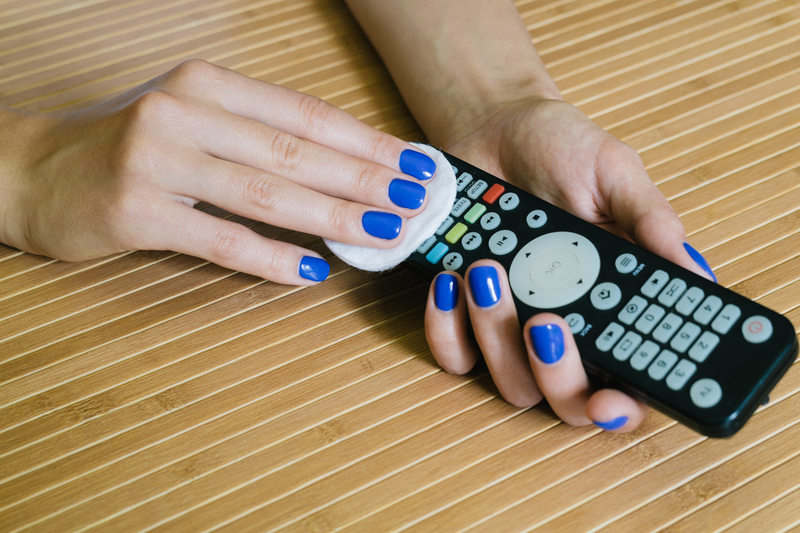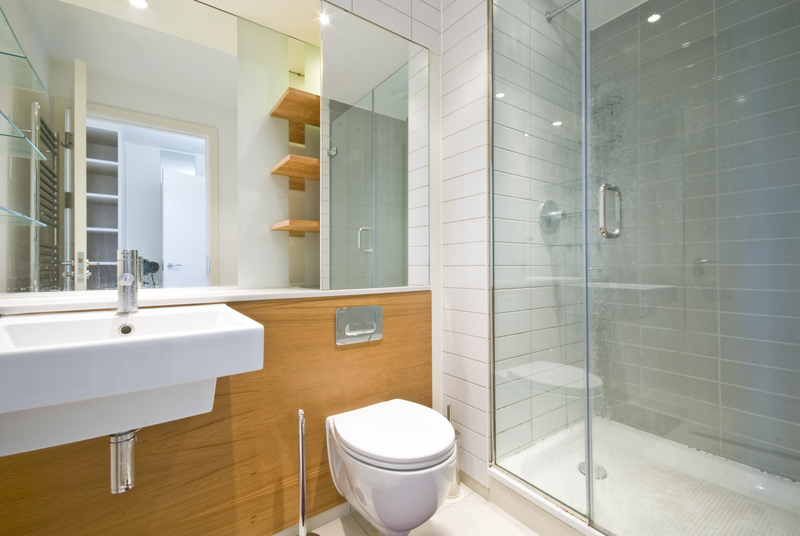Achieve a Pristine Stovetop Surface with Minimal Effort on Burnt Food
Posted on 20/06/2025
Achieve a Pristine Stovetop Surface with Minimal Effort on Burnt Food
Every home cook has faced the dreaded moment of burnt food left on the stovetop. Whether it's an accidental spill, overflowed sauce, or simply a buildup after a busy week, stubborn stains can jeopardize the shine and cleanliness of your stove surface. The good news? You can achieve a pristine stovetop surface with minimal effort on burnt food with the right tricks and strategies. This comprehensive guide will walk you through a variety of effective, easy, and safe methods to restore your stovetop's sparkle while saving you time and stress.

Why a Clean Stovetop Matters: The Benefits of Regular Care
- Extended Appliance Lifespan: Regular cleaning prevents corrosive damage and keeps your stove running efficiently for years.
- Improved Cooking Experience: A spotless surface eliminates unwanted odors, flavors, and cross-contamination between meals.
- Safer Kitchen Environment: Clean stoves reduce the risk of grease fires and bacterial buildup.
- Aesthetic Appeal: Maintaining a gleaming stovetop surface enhances your kitchen's overall look and inspires more frequent home-cooked meals.
Understanding Stove Surfaces: Which Cleaning Methods Work Best?
Before you start scrubbing away burnt food residue, it's vital to know what type of stovetop you have. The main types include:
- Gas stovetops with removable grates and burners
- Electric coil stoves with drip pans
- Glass or ceramic smooth-top stoves
- Induction cooktops similar in appearance to glass but with different underlying technology
Tip: Always consult your stove's user manual for safe cleaning practices to avoid voiding warranties or causing surface damage.
Quick-Start Guide: Essential Supplies for Effortless Cleaning
To achieve a pristine stovetop surface with minimal effort on burnt food, gather these basic supplies:
- Baking soda
- White vinegar
- Dish soap
- Non-abrasive scrubbing pads or sponges
- Microfiber cloths
- Plastic scraper or old credit card for tough residue
- Spray bottle
- Optional: Commercial stovetop cleaner safe for your surface type
With these items at hand, you're primed to tackle even the toughest burnt-on stains without harsh chemicals or exhausting scrubbing sessions.
Step-by-Step Cleaning Methods for Different Stovetop Types
Cleaning Burnt Food on Gas Stovetops
Gas stoves get messy fast, but their removable parts make deep cleaning more manageable. Follow these steps to achieve optimal results:
- Turn off and cool down: Ensure burners and grills are completely cool before cleaning.
- Remove grates and burner caps: Soak them in a sink with warm, soapy water to loosen residue.
- Make a cleaning paste: Combine baking soda and water into a thick paste. Apply it generously to stubborn, burnt areas on the stove surface.
- Let it sit: Allow the paste to work for 15-30 minutes. For severe buildup, wait longer to weaken the bond of burnt-on food.
- Scrub gently: Use a non-abrasive pad or an old toothbrush to scrub residue. Stubborn bits may require a plastic scraper.
- Wipe clean: Use a damp microfiber cloth to remove all residue and baking soda paste.
- Rinse and replace parts: Rinse grates and burner caps, dry thoroughly, and replace them on your sparkling clean stovetop.
Quick Tip: For greasy or sticky splatters, spray the surface with diluted vinegar before applying the baking soda paste.
Reviving Electric Coil Stoves with Minimal Effort
Electric coil stoves require a slightly different strategy, particularly for drip pans and coils themselves.
- Unplug and remove coils: Always ensure the stove is unplugged before removing electrical components.
- Soak drip pans: Place pans in a mixture of hot water, dish soap, and a quarter-cup of baking soda to break down burnt food.
- Scrape and scrub: After soaking for 20-30 minutes, use a non-abrasive pad or sponge to lift off the loosened grime.
- Clean the stove top: Wipe down the surface with a vinegar solution or multipurpose kitchen cleaner. Treat caked-on spots with a baking soda paste if needed.
- Wipe dry and reassemble: Once all parts are thoroughly dry, restore them to their original positions for a like-new appearance.
For persistent stains, re-apply baking soda and let it sit longer, or repeat the soaking process.
Glass and Ceramic Stove Tops: Achieve a Mirror-Like Shine
If you own a smooth-top stove, burnt-on food can be particularly visible and unsightly. Here's the minimal effort approach:
- Allow complete cooling: Glass and ceramic surfaces can crack if exposed to cold cleaning liquids while hot.
- Remove loose debris: Gently wipe away crumbs and powdery spills with a dry cloth.
- Apply a baking soda and vinegar paste: Sprinkle baking soda on the affected areas and spray with a mist of vinegar. They will fizz, helping to lift the food buildup.
- Cover with a warm, damp towel: Place a towel over the spots for 10-15 minutes to soften burnt residue.
- Scrape safely: Use a plastic scraper or razor blade at a shallow angle to lever away softened gunk--avoid gouging the surface.
- Wipe and polish: Use a clean microfiber cloth and glass-safe cleaner to buff to a shine.
Warning: Never use steel wool or harsh abrasives on glass or ceramic stovetops. They can scratch or dull the finish permanently.
Special Tips for Induction Cooktop Surfaces
Induction hobs need gentle, frequent cleaning since stuck-on food can interfere with sensor operation. Most residue lifts easily with a soft, damp cloth, but follow the glass-top method above for more stubborn stains. When in doubt, always use products labeled as safe for induction or glass surfaces.
Secret Weapons: Natural Solutions for Stubborn Burnt Food
Lemon Power on Oily Stains
For a citrus-fresh clean, lemon juice is both a natural degreaser and deodorizer:
- Cut a lemon in half and rub directly onto the burnt area.
- Let the acidic juice sit for 10 minutes.
- Wipe clean with a wet microfiber cloth.
This simple trick is especially effective on greasy surface stains and leaves your kitchen smelling amazing.
Hydrogen Peroxide and Baking Soda for Tough Jobs
- Mix baking soda with a few drops of hydrogen peroxide to create a bubbling paste.
- Apply to the burnt area, let sit for 15 minutes, then wipe and rinse thoroughly.
This combination breaks down blackened residues without toxic chemicals.
Commercial Cleaners: When to Use Them
If natural methods can't tackle stubborn burnt-on messes, select a commercial cleaner specifically labeled for your stovetop type. Always follow manufacturer instructions closely, perform a spot test first, and avoid mixtures containing bleach--especially on stainless steel.
Preventing Burnt Food Stains: Proactive Tips for Any Kitchen
Reducing the frequency and severity of burnt-on food means less cleaning overall. Here's how you can prevent problems before they start:
- Wipe after every use: Quickly wiping up spills while the stove is still warm (but safe to touch) prevents residue from hardening.
- Use splatter guards or lids: These simple tools dramatically cut down on sauce, oil, and food splatter.
- Monitor your dishes: Try using timers or "stir alarms" for simmering soups or sauces prone to boiling over.
- Protect with liners: For gas and electric stoves, consider using silicone liners or foil covers in drip pans for less scrubbing later.
Expert Advice: Troubleshooting Tough Stovetop Cleaning Scenarios
- White streaks or haze on glass tops? Use a specialty stove polish and buff with a soft cloth.
- Charred bits fused to burners? Soak overnight in hot soapy water, add some vinegar, and scrub after a long soak.
- Lingering burnt smells? Simmer a pot of water with lemon slices and a dash of vinegar to refresh your kitchen air.

Frequently Asked Questions
How can I quickly clean a spill while cooking?
Safety first: Turn off the burner and, if safe, use a damp cloth to wipe the spill. For more severe burns, let the stove cool before tackling the mess.
Are baking soda and vinegar safe for all stovetops?
They are safe for glass, ceramic, gas, and electric tops when used correctly--always rinse thoroughly and check your manufacturer's recommendations.
Can I use a razor blade on a glass cooktop?
Yes, but cautiously: always keep the blade flat and avoid chipping the surface. Specialized cooktop scrapers are ideal.
How often should I deep clean my stovetop?
Monthly deep cleans are ideal, with spot cleaning after each cooking session to maintain a pristine look and prevent build-up.
Conclusion: Enjoy a Sparkling Stove with Less Effort
Achieving a pristine stovetop surface with minimal effort on burnt food is within everyone's reach. By understanding your stove's needs, arming yourself with simple supplies, and leveraging nature's cleaning arsenal, you'll save time and protect your appliance investment. With a few preventative habits, burnt-on food residue will become an occasional hiccup, not a source of kitchen dread.
Ready to restore your kitchen's shine? Start today and transform your stovetop from grimy to gleaming--without breaking a sweat!



